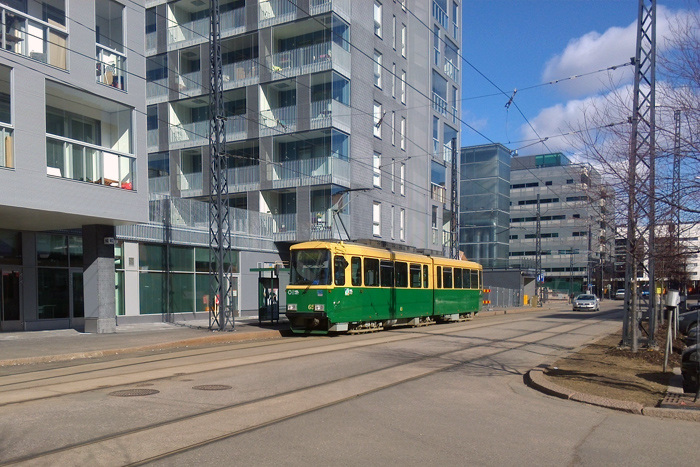Helsinki Underground
2015
Helsinki Underground is an interactive guided tour of Finland's Capital from 30 meters deep. Presenting facts and fictions about Helsinki and the northernmost metro in the world, the narrated performance takes travellers on an adventure. Together we discover the hidden architecture of the city, its wildlife and geology. Based on personal observations, factual research and interviews, the work focuses on what we see from below the horizon.
Helsinki Underground starts at the entrance to Kalasatama metro station. The tour lasts 20 min and includes a visit to the otherwise inaccessible to general public turning point of the metro route in Ruoholahti. It was part of HKL Taidelinja and Gaming the System exhibitions in September 2015.

Underground, time and place are different to those outside. Travelling in a metro car, we perceive the landscape around us based purely on the fact that we know the location through our intelligence, and distinct it from another by a sense of belonging, feeling that here is home, Helsinki, and not Paris or Tokyo, even though we cannot see the landscape to prove it. This notion also echoes the idea of guided tours being associated with visiting a new place, and wanting to learn about it, quickly. That, in turn, represents temporality, tourism, the concept of “just visiting”. By contrast, there are no criteria for permanent presence in a city. How can you know a place enough to be able to call yourself a local? It seems that public transport plays an important role in our process of settling in to a place. After a while we learn the bus time table and the most convenient metro car by heart and start helping lost tourists by giving directions to Kamppi.
Do we belong to a city or does a city belong to us?

Tram Tales Helsinki
2015
Tram Tales Helsinki is a project carried out to investigate urban space. The aim was to experiment and rethink the idea of public and private, of the ownership of the city and the possibilities of involving the audience without pressuring them into participation. Through mixing facts and fiction, the intention was to question authority of a tour guide, educational figure and show that people believe what they want to believe. For the performance in March 2014 the route of the tram number 6 in Helsinki, from Arabia to Sörnäinen was chosen.
The idea was to lead a tour of Helsinki to classmates and the people who were just going about their business on the tram. It started at the first stop so there everyone participating in the tour could sit together, at the back of the tram, to get a better view outside. The artist stood up in front of the group and spoke, as the tram was going on its usual route.

The tour included real historical facts, which found online, for example: The name Arabia comes from the fact that it was so far from the city centre, so when the region was built, in the 19th century, the streets were name after romanticized places like Arabia, India and Damascus. After the 1995, when the housing area was developed, was also the time when Finland joined the EU so the streets were named after London, Berlin and other European places.
Some appropriation of facts took place to suit the location: Mikhail Bulgakov, who was a Russian writer born in the Ukraine and moved to Helsinki in 1920, in fact, lived on the tram. Some personal observations about the area were also made:
Please note the drying racks on the balconies of apartments, and how now they are mostly used to hang a decorative lantern. Look at the interesting way people decorate their windows – some leftover Christmas ornaments like stars and snowflakes. The observations were based on a previous visual research by the artist of the area.
Some completely made up facts also were presented: The half-erased Christmas tree on the window actually resembled the old Finnish tradition of not taking the Christmas tree from the house altogether once the season is over, but, in the lead up to Easter, removing the branches one by one and burning them.
The guide stopped talking at the stops so not to disturb people getting on and off the tram. The journey lasted for about 10 minutes.
The group was listening attentively, asking questions and making comments. No one from the passengers got involved in the conversation, but some people seemed to be listening. The performance created a situation where interaction wasn’t necessary, that people had an opportunity to just sit and listen.
One of the possibilities for further development of the performance would be to have some tour-guide features like a badge and a high-visibility vest and have a microphone. On the other hand, it seems more inclusive to create the least separation possible, to look like a normal person.

The fact that not everyone could hear the tour, or understand it as it was lead through the English language presumably posed an obstacle to some of the audience, yet the idea was not to educate (or mislead) the people by presenting them with contextual information, but rather showcase a possibility of claiming the public space and the encourage to take interest in the otherwise mundane environment. Herbert Marcuse, speaking against application of any ideologies through art, stated that the truth of art lies in its power to break the monopoly of established reality (i.e., of those who established it) to define what is real. For him, the art was in the gesture, in the statement of making the people question authority and see alternative possibilities.